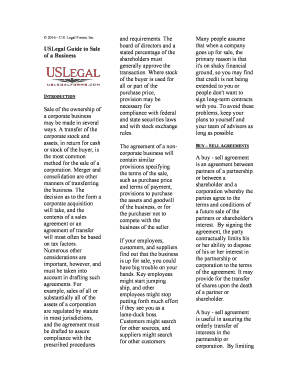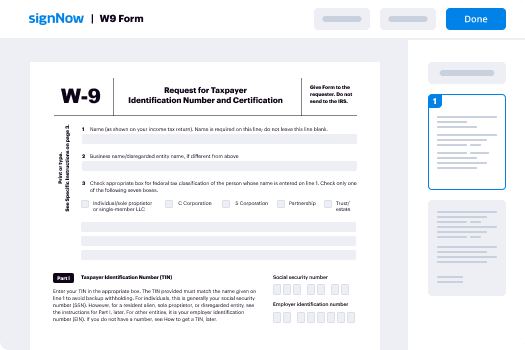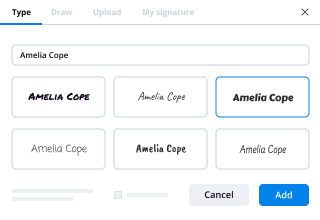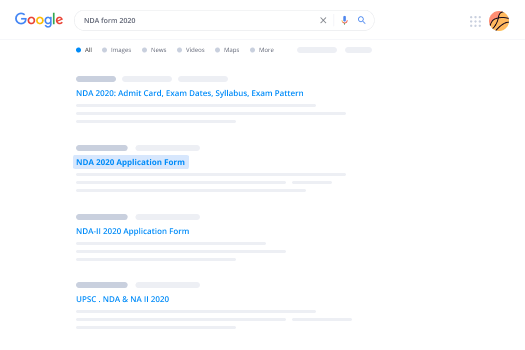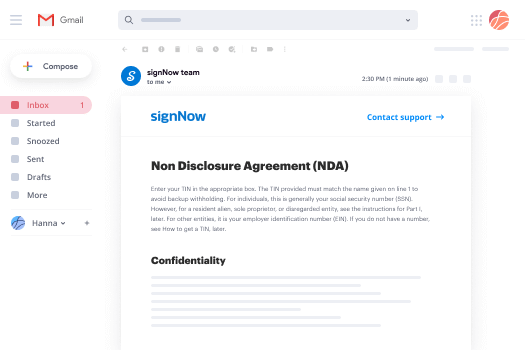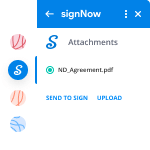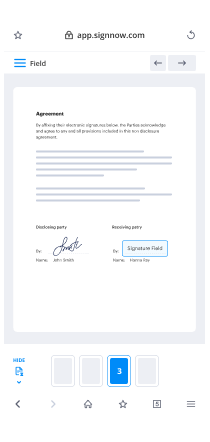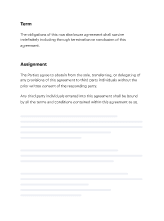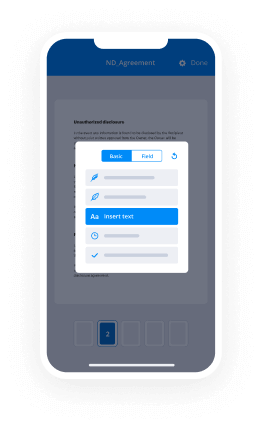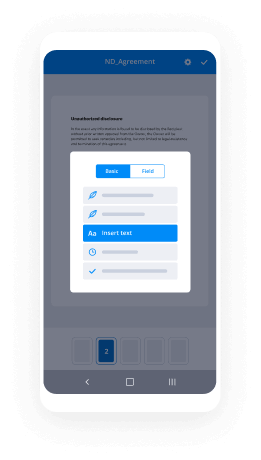© 2016 - U.S. Legal Forms, Inc
USLegal Guide to Sale
of a Business
INTRODUCTION
Sale of the ownership of
a corporate business
may be made in several
ways. A transfer of the
corporate stock and
assets, in return for cash
or stock of the buyer, is
the most common
method for the sale of a
corporation. Merger and
consolidation are other
manners of transferring
the business. The
decision as to the form a
corporate acquisition
will take, and the
contents of a sales
agreement or an
agreement of transfer
will most often be based
on tax factors.
Numerous other
considerations are
important, however, and
must be taken into
account in drafting such
agreements. For
example, sales of all or
substantially all of the
assets of a corporation
are regulated by statute
in most jurisdictions,
and the agreement must
be drafted to assure
compliance with the
prescribed procedures and requirements. The
board of directors and a
stated percentage of the
shareholders must
generally approve the
transaction. Where stock
of the buyer is used for
all or part of the
purchase price,
provision may be
necessary for
compliance with federal
and state securities laws
and with stock exchange
rules.
The agreement of a non-
corporate business will
contain similar
provisions specifying
the terms of the sale,
such as purchase price
and terms of payment,
provisions to purchase
the assets and goodwill
of the business, or for
the purchaser not to
compete with the
business of the seller.
If your employees,
customers, and suppliers
find out that the business
is up for sale, you could
have big trouble on your
hands. Key employees
might start jumping
ship, and other
employees might stop
putting forth much effort
if they see you as a
lame-duck boss.
Customers might search
for other sources, and
suppliers might search
for other customers.
Many people assume
that when a company
goes up for sale, the
primary reason is that
it's on shaky financial
ground, so you may find
that credit is not being
extended to you or
people don't want to
sign long-term contracts
with you. To avoid these
problems, keep your
plans to yourself and
your team of advisors as
long as possible.
B
UY – S ELL AGREEMENTS
A buy - sell agreement
is an agreement between
partners of a partnership
or between a
shareholder and a
corporation whereby the
parties agree to the
terms and conditions of
a future sale of the
partners or shareholder's
interest. By signing the
agreement, the party
contractually limits his
or her ability to dispose
of his or her interest in
the partnership or
corporation to the terms
of the agreement. It may
provide for the transfer
of shares upon the death
of a partner or
shareholder.
A buy - sell agreement
is useful in assuring the
orderly transfer of
interests in the
partnership or
corporation. By limiting
a party's ability to
dispose of his or her
interest in the
partnership or
corporation, control of
the partnership or
corporation may be
assured. These
agreements provide for
the later modification
upon written agreement
by all stockholders or
partners. SELLING MEMORANDUM
A selling memorandum
presents information
about your company,
products, industry, and
market in a simplified
format that presents
your company in a very
positive light.
The beginning contains
an executive summary
that briefly lays out your
key selling points, and
tells the buyer why you
want to sell. Other
sections describe the
facts about your
company's history,
structure, and
operations; the asking
price and basic terms
you're looking for; your
industry, market, and
products; your
employees and physical
assets; historical and
projected financial
statements; and any
other information that
will explain why this is
such a strong opportunity. Be mindful
of your audience don't
divulge any information
that you wouldn't want
your competitors to see.
Your selling
memorandum is
essentially a marketing
tool, but it is
recommended to have it
reviewed by a lawyer
and accountant (it's
likely that your
accountant will provide
the financial information
you include). It is
important that the
statements are accurate
and not misleading or
incomplete, even though
in most cases the
memorandum is not
considered a prospectus
that would need to
comply with SEC or
state securities
regulations..
Don't try to cover up
problems, as this will
likely cause distrust by
the buyer for everything
you say after that. You
could be also sued for
fraud. Do not show your
selling memorandum to
anyone who hasn't
signed a confidentiality
agreement. That
includes your
accountant, business
broker, and other
professionals (your
lawyer will already be
bound by professional
responsibility
requirements so a formal
confidentiality
agreement isn't
necessary). D
ISCLOSURE DUTIES
In dealing with potential
buyers, you must be
truthful and complete in
the information you
share about your
business. It's fine to be
optimistic and present
the positive side of
things. For example, you
may prepare a selling
memorandum that
highlights all the
advantages your
company has over the
competition. However,
you also need to be
inform the buyer of any
potential problems in
your business you are
aware of. You should
present possible
solutions when you
discuss them, but they
must be disclosed to
avoid claims involving
fraud.
You can be sued for
fraud if you make
material
misrepresentations of
fact about your business.
Material generally
means anything that, if
known to the buyer,
would cause a change in
the price paid for the
business.
Misrepresentation may
also include failing to
speak.. The fact that the
buyer didn't ask you if
your customers were
likely to cancel their
contracts next year
doesn't mean that you
can't be sued for not
mentioning it.
Misrepresentations can
be something that you
knew but didn't disclose,
or in some cases
information that you
were reckless or grossly
negligent in not finding
out. The issue of
liability for fraud is one
reason you should have
your lawyer review any
written material you
pass on to buyers, to be
sure that it is accurate
and provides all the
information it should.
To be successful in a
lawsuit for fraud, the
buyer would have to
prove that he or she
reasonably relied on
your statement (or the
fact that you made no
statement). Reasonable
reliance implies that the
buyer uses common
sense in relying on the
statement. This is one
reason the buyer
conducts a due diligence
investigation of your
business before the
purchase agreement is
signed.Securities fraud
potentially applies to all
business transactions. If
you sell the stock in
your corporation, or
accept stock in the
buyer's corporation as
payment, you may be
required to make
disclosure obligations
under federal and state
securities laws. If you're
contemplating a
transaction that involves
a sale or exchange of
stock, expert legal
assistance on a variety
of issues should be
sought, including what
you can, can't, and must
say about your business.
Fraudulent conveyance
is another claim that
may be raised by
creditors. If you and the
buyer set up a deal in
such a way that one or
both of you should have
known that the
transferred company
would fail, you may be
liable to pay back the
purchase price. For
example, if you are
overly optimistic, and
lead the buyer to take on
more debt than the
company can repay, the
company may go
bankrupt. The
bankruptcy judge can
require you to pay back
the purchase price and
rescind the sale. This is
to give any unsecured creditors of the business
a fair chance at getting
paid when the company
is liquidated. Your
potential liability for
fraudulent conveyance
may last for up to six
years after the sale, so
it's important that you
check out the buyer and
his or her resources, to
be sure that the company
has a good chance of
survival after you sell it. S
ALES AGREEMENTS
The sales agreement is
the key document in
buying the business
assets or stock of a
corporation. It is
important to make sure
the agreement is
accurate and contains all
the terms of the
purchase. It is
recommended to have
an attorney review this
document. The
agreement should define
everything that you
intend to purchase of the
business, assets,
customer lists,
intellectual property,
and goodwill.
The following is a
checklist of items,
among others, that
should be addressed in
the agreement:
Names of Seller, Buyer,
and Business
Background information
Assets being sold
Purchase price and
Allocation of Assets
Covenant Not to
Compete
Any adjustments to be
made
The Terms of the
Agreement and payment
terms
List of inventory
included in the sale
Compliance with the
Bulk Sales laws of the
state
Any representation and
warranties of the seller
Any representation and
warranties of the buyer
Determination as to the
access to any business
information
Determination as to the
running of the business
prior to closing
Contingencies
Possibilities of having
the seller continue as a
consultant
Fees, including brokers
fees
Date of closing
Get the signed purchase
agreement into escrow
immediately and sign
off any contingencies
quickly. Make sure you
go through the
Allocation of Purchase
Price in the beginning of
the escrow process not
at the end which happens most of the
time.
B
UYING AN EXISTING
BUSINESS
Most businesses are
purchased by companies
as a means of
diversification or
expansion. In these
situations several of the
ingredients of success
are usually present: the
business has good
reasons for the
acquisition, it has
experience in the
industry to be entered
through long contact, it
has skilled people to
evaluate acquisition
candidates, it has the
means to make the
purchase in cash or
through contact with
funding sources, and it
has the ability to run the
purchased business.
Nevertheless, many
acquisitions flounder.
Similarly, the
prospective buyer may
be a wealthy individual
with many years of
business experience but
presently no corporate
base. Such an individual
is functionally
equivalent to a company
in means and in
experience. Buying an
existing business is also,
finally, one of the
alternatives available to
the would-be
entrepreneur. He or she faces the same decision
manufacturers call the
"make or buy" decision:
Should we tool up to
make this product or buy
it from someone else?
To make some-thing
from scratch usually
takes longer but offers
opportunities to shape
the product exactly as
the builder intends it to
function. To buy the
product usually gets the
buyer to the starting line
much faster but limits
his or her choice to a
preexisting design.
The individual entering
business must keep in
mind that buying a
business is not a way to
avoid initial fund-raising
chores. In its summary
of the issue, for
example, the U.S. Small
Business Administration
(on its site titled
"Buying a Business")
makes the following
somewhat erroneous
statement: "Many find
the idea of running a
small business
appealing, but lose their
motivation after dealing
with business plans,
investors, and legal
issues associated with
new start-ups. For those
disheartened by such
risky undertakings,
buying an existing
business is often a
simpler and safer
alternative." The reason
entrepreneurs worry
over business plans and
talk to investors is
because they want to
raise money they don't
have. A person lacking
funds but wishing to buy
an existing business
must also project the
business into the future,
have a plan, and
undergo the process of
raising funds. Books
exist that boldly promise
to teach the entrepreneur
how to buy a business
with not a penny
down—but few people
actually have the
persuasive powers or
profiles of experience to
make that sort of thing
happen. Buying rather
than building a business
is a decision to be
reached after the
funding effort has at
least been started and
looks reasonably
promising.
Once the funding issues
are resolved sufficiently
to turn the entrepreneur
into an actual buyer,
meaning that at least a
portion of the down
payment is in hand, the
key elements of buying
a business are 1)
formulation of clear
objectives (homework),
2) search and contact, 3)
evaluation of the target
(sometimes called due-diligence), and 4)
negotiation and
purchase.
These elements are very
frequently iterated in an
actual acquisition
program, meaning that
failure to close deals and
the learning that has
taken place while
getting to an
unsatisfactory result will
cause the entrepreneur
to rethink the process,
sometimes from the
beginning. Initial
homework consists of
exploring the industry or
specialty that looks most
suitable to the talents
and experience of the
buyer. A part of that
homework is to learn the
going price for different
types of enterprises.
That, in turn, may cause
changes—and even
require additional
fundraising efforts. A
search for candidates
may reveal that not too
many businesses are
available or available in
the right locations, that
prices may be high or
most candidates in
trouble. Evaluation of
businesses after contact
may generate wrong
assumptions about the
real returns possible.
Negotiations may fail.
Buying a company is
almost always a learning
process unless the buyer is very experienced,
(perhaps even working
in the business already)
the business to be
purchased and its
ownership are well
known (possibly in the
extended family), and
everything is easily
negotiated because of
previous relationships.
OBJECTIVES
A buyer's earlier
experience (business or
avocational) usually sets
the stage for formulating
goals. Buyers rarely set
out to buy into
altogether unknown
industries, but they may
not know the business at
its highest levels. For
example, a person may
know a business from an
operational but not from
a marketing point of
view—or the reverse.
Some kind of homework
is usually involved.
SEARCH
Sellers of businesses
will advertise
themselves or engage
the services of a
business broker. Finding
candidates is thus
similar to recruiting
employees. Sources of
leads are newspaper ads,
the Internet, or brokers
who also advertise
themselves. Well-
developed Internet
resources usually enable
a buyer to locate
businesses within a state
or zip code zone further
subdivided by type of
business and even asset-
size categories. Brokers
specializing in different
regions or nationally are
relatively easy to find.
Substantial searching
around is, of course,
implied—but provides a
great deal of information
on what is available,
what asking prices are,
and where the nearest
targets are located.
Searching can be handed
to a broker who will
then call or e-mail the
buyer with suggestions.
Examples of sites,
including one that
advertises businesses for
sale directly
(cityfeetBiz) and of
brokers (United
Business Brokers,
serving cities in Utah,
Nevada, California, and
Idaho), are provided in
the references; there are
many more.
EVALUATION
Once contact has been
established with a
candidate, a process of
mutual exploration
begins, usually with a
visit to the candidate's
place of business where,
following a tour of the place, preliminary
discussions begin. The
motivations of buyers
and sellers are
essentially the same.
Each wishes to establish
the qualifications of the
other—and the buyer
must therefore be
prepared to give as
much as he/she gets,
namely to display his or
her abilities to buy the
business. If the buyer
has no business identity,
the seller will usually
ask for references and
not make financial
disclosures beyond those
advertised until the
buyer's status and net
worth have been
carefully checked. In the
normal course of events
several contacts will
take place before the
buyer can obtain
information sufficient to
study the targeted
business closely. That
process is described
further later in this
entry. Evaluation of a
business is central to
price negotiations later
and must be carried out
with care and diligence
in order to avoid legal
and financial problems
later.
NEGOTIATIONS AND
PURCHASE
Assuming that the
evaluation has produced satisfactory results,
negotiations may
become necessary to
resolve remaining open
issues. These can take
many forms and may
deal with just about any
aspect of the business,
from the handling of
certain liabilities to
employment contracts
for key employees or
executives. Eventually a
purchase agreement will
be drawn up, usually
involving legal
professionals, and the
purchase finalized with
signatures and transfers of funds.
EVALUATION OF A
BUSINESSES
The evaluation of a
business can be divided
into four clusters: the
seller's history and
motivations, legal
matters affecting the
operation, the financial
status of the business,
and the condition and
prospects of the business
in its market (its
products, services, and
future).
The buyer, of course,
will want to know the
history of the business,
how it came about, how
it developed, and why
the seller is now willing
to sell. The usual reason
for the sale of a small
business is the age of the
seller: he or she wishes
to retire and does not
have children or
relatives willing to take
over. A business is also
often for sale because it
is being spun off from a
larger operation because
it no longer fits. Why it
no longer fits then
becomes a matter of
interest to the buyer—
who is, above all,
interested in discovering
weaknesses in the
business.
Legal matters concern
pending lawsuits or
regulatory problems
some of which may have
to be dealt with by the
new owner. Leases and
other long-term legal
obligations are usually
reviewed in this
context—ideally with
the help of the buyer's
own legal advisor.
Financial evaluation is
based on the thorough
review of the company's
books—its balance sheet
and income statement
going back at least five
years or to the beginning
of the business,
whichever is earlier.
Ideally, again, audited
financial returns are best
or, if the seller is
unwilling to pay for an
audit, tax filings with
the IRS can be used for a separate view of
finances. Sole
proprietorships and
partnerships do not have
stock and therefore sales
of the businesses are
always based on assets;
the level of attention to
assets will therefore
depend on their
character and value.
Depending on the
situation, the buyer may
wish to undertake an
inventory of assets at his
or her own expense or to
engage the services of
an appraiser. Such
detailed checking of
physical assets is not
usual, however, but
inspections by
knowledgeable people
(if the buyer lacks
personal expertise) are
usually arranged.
Normally the books of a
well-run business will
accurately reflect asset
values. If the business is
poorly run, the offered
price can hedge against
risks.
Most careful buyers will
use the company's
financial data to develop
an alternative valuation
of the business using
discounted cash flow
analysis. For more detail
on this subject, please
see the entries titled
Discounted Cash Flow
and Mergers &
Acquisitions in this volume. Such valuation
typically involves
projecting operating
results of the business
out in time, which
requires a good grasp of
the company's products,
processes, and likely
futures sales and profits
in an evolving market—
the last category of
evaluation. The value of
the business as
calculated using such
analysis is then
compared to the asking
price. If the two values
are reasonably close, an
agreement is likely. If
far apart, negotiations
need to ensue or the
buyer may elect to stop
discussions.
Finally, the buyer must
strive to understand the
business thoroughly
enough to have
confidence to run it in
the future. From an
internal perspective this
means a good grasp of
how the company is run
internally, who its
suppliers are, how
processes run—and
above all the state and
morale of the
employees. Looked at
from the outside, the
buyer must understand
the company's
distribution channel(s),
major customers or
categories of customers,
the market itself, and
forces that impact on
that market. In fact,
direct contact with the
customers of the
company being sold is
highly advisable—
being, in effect, an early
effort of marketing to
the buyer's future
customers. Some
businesses operate in
very tricky
environments. An
example may be an
environmental services
provider whose business
absolutely demands
strict government
enforcement to underpin
sales. In such a case
careful examination of
regulatory trends—and
their easing or
tightening in good and
bad economic times—
may reveal hidden
weaknesses in a
business. This broad
analysis, delving deeply
into details that invite a
closer look, is invaluable
in making projections
into the future.
FINANCING
Whether the buyer and
seller ultimately agree to
an installment sale, a
leveraged buyout, a
stock exchange, or an
earn-out to transfer
ownership of the
company (see the entry
Selling a Company for
descriptions of these options), the sale cannot
proceed if the buyer is
unable to secure
adequate financing.
Most small businesses
are acquired by buyers
who finance a
considerable portion of
the purchase price
themselves. Even so, the
buyer must still make
sure that he or she has
enough money to make
a down payment and
cover the business's
capital requirements.
Sometimes, then, buyers
are forced to secure
financing from outside
sources. The level of
these will depend on the
buyer's personal
investment. Lenders or
investors like to see the
buyer deeply committed
before they come to the
table pen in hand.
Lending institutions like
banks and consumer
finance companies are
more open to borrowers
involved in purchasing
larger companies, but
even in these instances,
the institutions often ask
buyers to put up the
company's inventory,
machinery, real estate,
and accounts receivable
as collateral. Sensible
buyers in need of
outside financing will
make certain that they
approach potential lenders with a
comprehensive and
well-considered loan
proposal (including a
good business plan).
Thus the entrepreneur is
unlikely to avoid that
task even when buying
an existing business.
CLOSING THE DEAL
Closings are generally
done either by means of
an escrow settlement or
through the services of
an attorney who
performs settlement. In
an escrow settlement,
the money to be
deposited, the bill of
sale, and other relevant
documents are placed
with a neutral third party
known as an escrow
agent until all conditions
of sale have been met.
After that, the escrow
agent disburses the held
documents and funds in
accordance with the
terms of the contract.
If an attorney performs
settlement, meanwhile,
he/she—acting on behalf
of both buyer or seller,
or for the buyer—draws
up a contract and acts as
an escrow agent until all
stipulated conditions of
sale have been met.
Whereas escrow
settlements do not
require the buyer and the
seller to get together to
sign the final
documents, attorney-
performed settlements
do include this step.
Several documents are
required to complete the
transaction between
business seller and
business buyer. The
purchase and sale
agreement is the most
important of these, but
other documents often
used in closings include
the escrow agreement;
bill of sale; promissory
note; security
agreement; settlement
sheet; financing
statement; and
employment agreement.
BIBLIOGRAPHY
cityfeetBiz. Web Site.
Available from
http://www.cityfeetbusin
essesforsale.com/.
Retrieved on 26 May 2006.
Ennico, Cliff. "Buying a
Business; Getting a
Private Mailbox."
Entrepreneur. 17 June 2003.
Hollander, Linda. Bags
to Riches: Success
Secrets for Women in
Business. Celestial Arts, 2003."How to Buy a
Business." Entrepreneur.
6 September 2005.
Klueger, Robert F.
Buying and Selling a
Business: A Step-by-
Step Guide. John Wiley
& Sons, 2004.
Steingold, Fred, and
Emily Dostow. The
Complete Guide to
Buying a Business.
Nolo, 2005.
Tuttle, Samuel S. Small
Business Primer: How
To Buy, Sell, and
Evaluate a Business.
streetsmartbooks, 2002.
United Business
Brokers. Web Site.
Available from
http://unitedbusinessbro
kers.com/. Retrieved on
26 May 2006.
U.S. Small Business
Administration. "Buying
a Business." Available
from
http://www.sba.gov/start
ing_business/startup/buy
.html. Retrieved on 25
May 2006.
Hillstrom, Northern
Lights
updated by Magee,
ECDI
